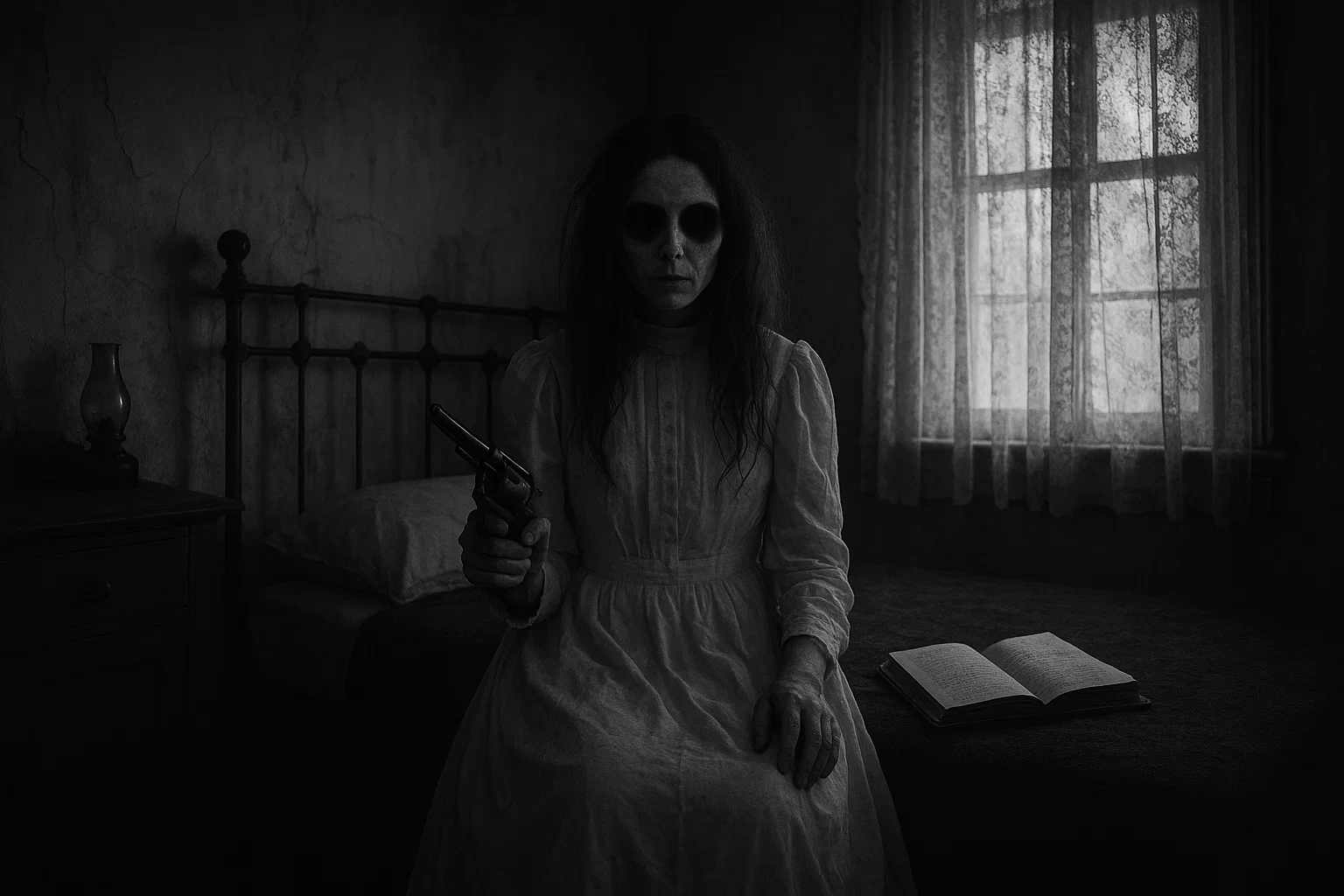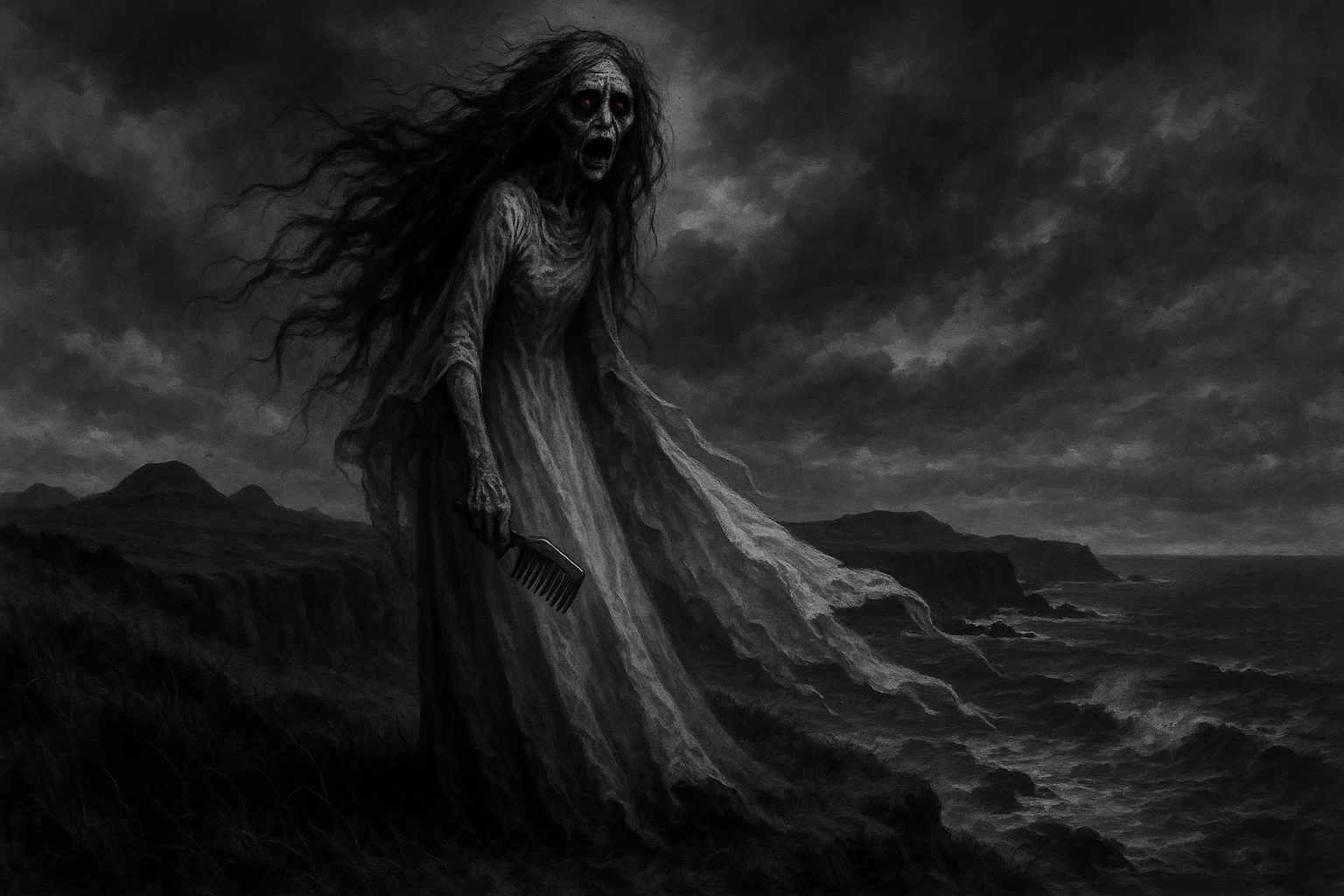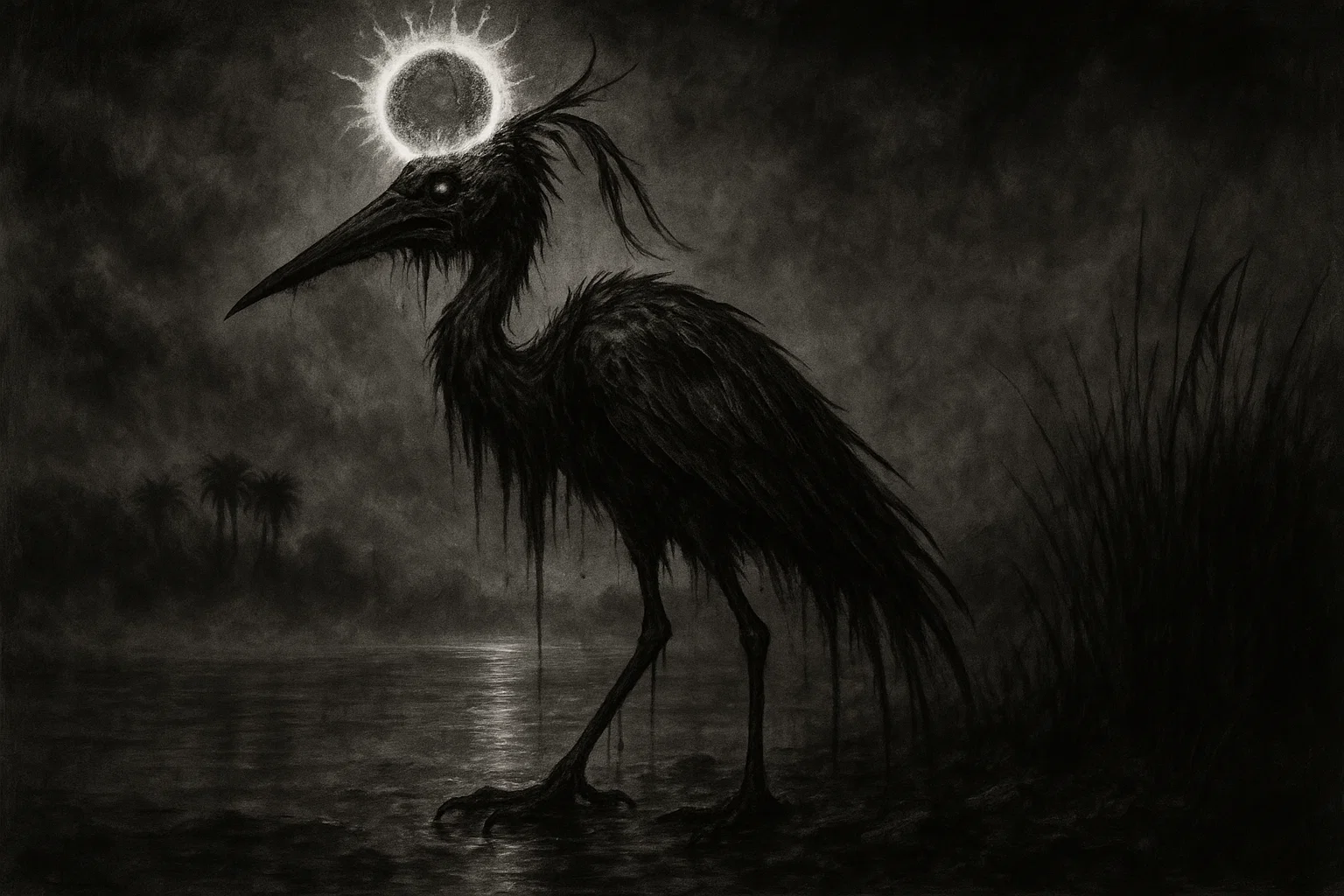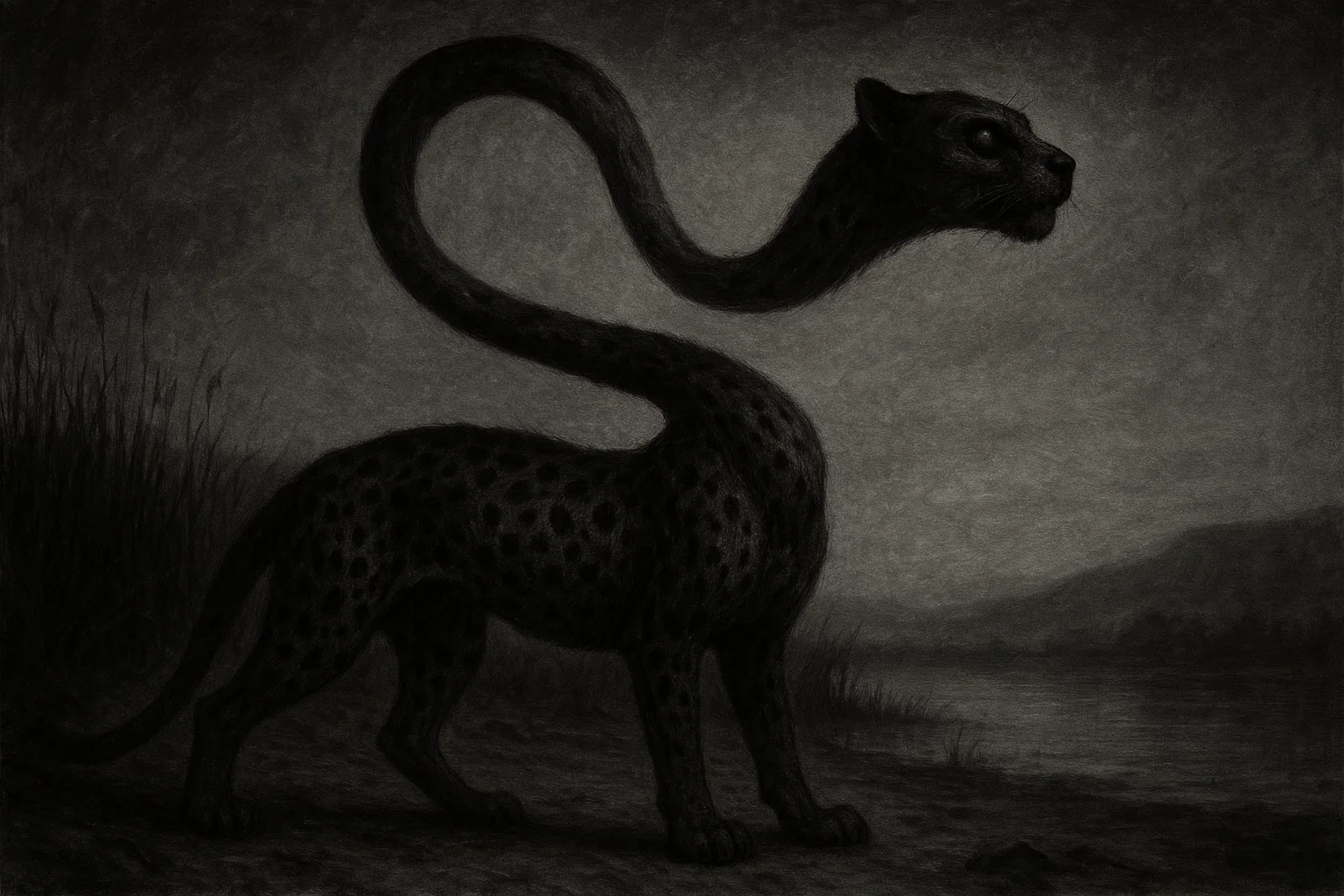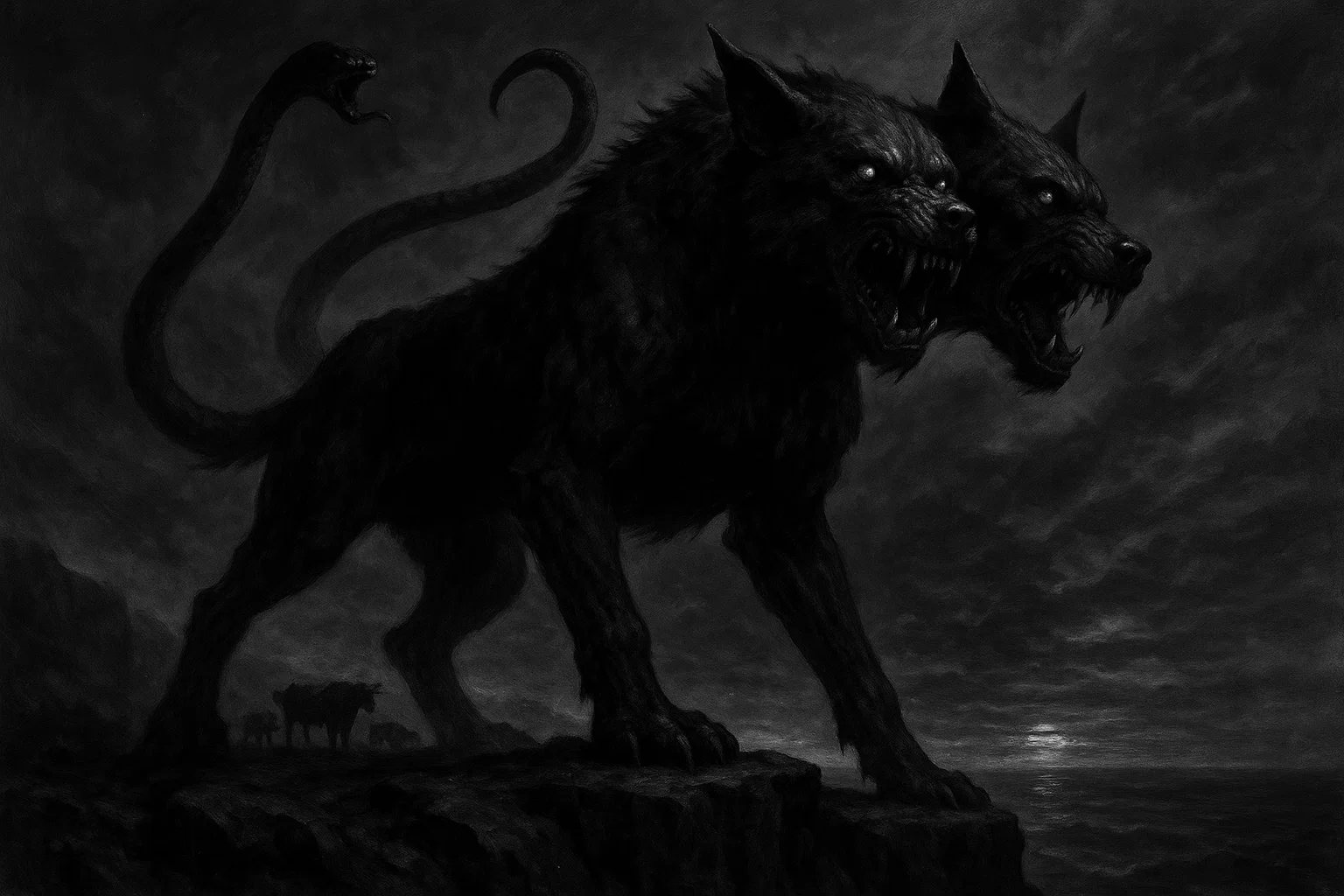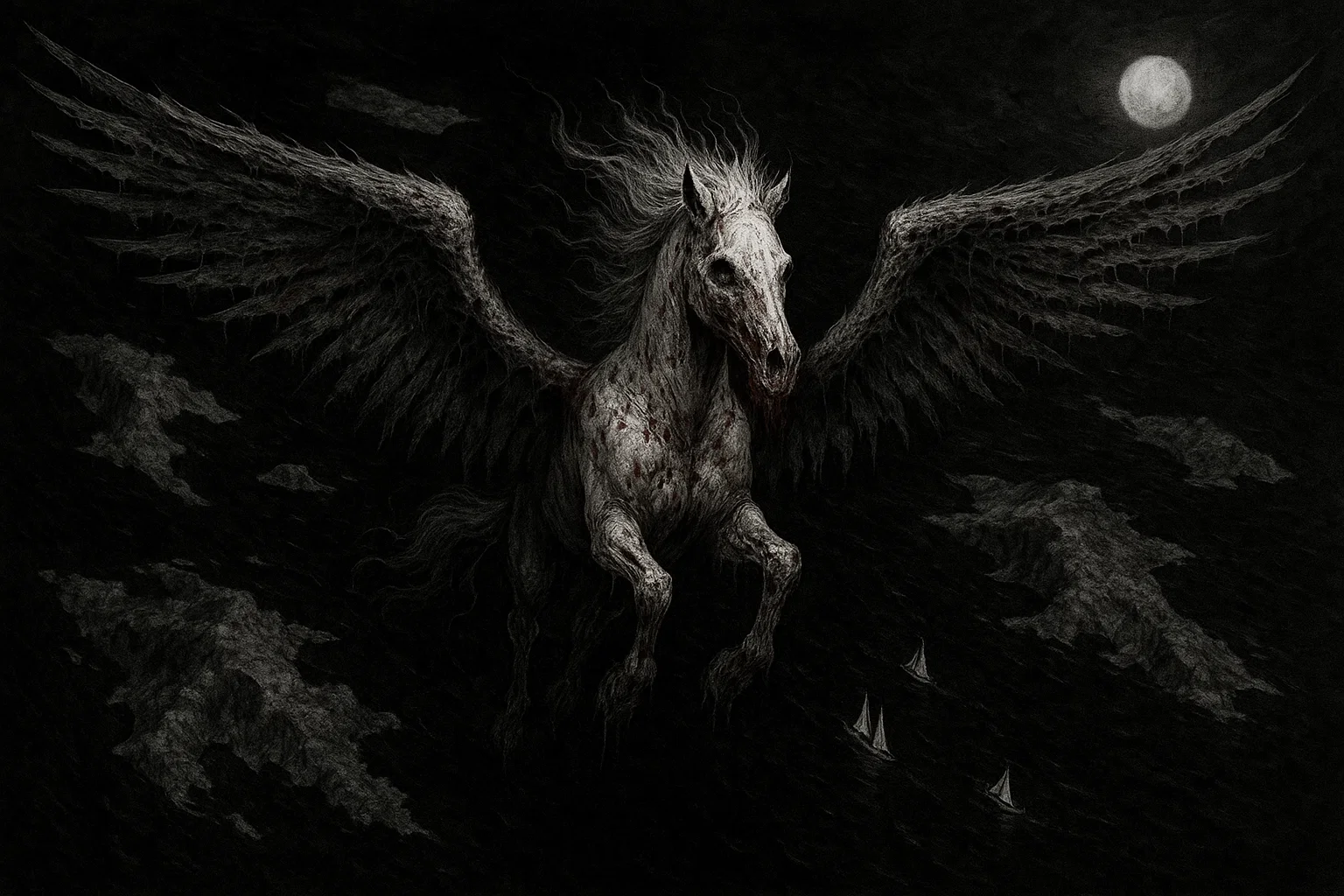The Whaley House is a Greek Revival-style brick mansion built in 1857 by Thomas Whaley, a prominent pioneer merchant and businessman.
However, tragedies marked the home’s early years—infant deaths, a devastating fire, and a daughter’s suicide—contributing to reports of apparitions, unexplained sounds, and cold spots that persist today.
Now operated as a museum by Save Our Heritage Organization, the Whaley House draws historians, tourists, and paranormal enthusiasts alike, offering guided tours that blend factual history with accounts of its eerie reputation as one of America’s most haunted houses.
Summary
Key Takeaways
| Attribute | Details |
|---|---|
| Name | Whaley House (also known as America’s Most Haunted House®) |
| Location | 2476 San Diego Avenue, Old Town, San Diego, California, USA |
| History | Built in 1857 on the site of San Diego’s public gallows; tragic events include the 1852 hanging of James “Yankee Jim” Robinson, the 1858 death of infant Thomas Whaley Jr. from scarlet fever, a 1870 fire that destroyed Thomas’s hardware store, and Violet Whaley’s 1885 suicide by gunshot following a failed marriage. |
| Type of haunting | Intelligent, Apparitions, Ghosts (General), Poltergeist |
| Entities | James “Yankee Jim” Robinson (hanged thief); Thomas Whaley (patriarch); Anna Whaley (matriarch); Thomas Whaley Jr. (infant); Violet Whaley (suicide victim); Corinne Lillian Whaley (infant); possibly a spectral dog and an unidentified little girl. |
| Manifestations | Heavy footsteps on stairs; cries and laughter of children; apparitions in period clothing; cold spots and temperature drops; objects moving unaided; disembodied voices; orbs of light; mists and fog; flickering lights; eerie giggles; scratches and choking sensations. |
| First reported sighting | 1857: Whaley family reported heavy footsteps attributed to Yankee Jim’s ghost shortly after moving in. |
| Recent activity | 2022: During a Ghost Files investigation, electronic voice phenomena (EVPs) and apparitions were recorded; visitors in 2025 continue to report footsteps and cold spots during evening tours. |
| Open to the public? | Yes; daytime historical tours (10 a.m.–4:30 p.m. daily) and evening haunted tours available; paranormal investigations offered after hours with ghost-hunting equipment. |
What Is the Whaley House Haunting?
The Whaley House haunting refers to a series of alleged paranormal phenomena tied to its grim foundations and the sorrows of its inhabitants.
Built on the site of multiple executions—including the 1852 hanging of thief James “Yankee Jim” Robinson—the house quickly earned a grim reputation. Even the Whaleys themselves reported heavy, lumbering footsteps in 1857—mere months after occupancy—believing them to stem from Robinson’s restless soul.
Over time, manifestations expanded to include full-bodied apparitions of family members, such as the patriarch, Thomas Whaley, in his frock coat, or the spectral form of his daughter, Violet, peering mournfully from windows.
You May Also Like: 15 True Ghost Stories You Shouldn’t Read Alone After Midnight
Whaley House Haunted History
The Whaley House owes its dark legacy to a combination of factors: violence, loss, and misfortune that shadowed its construction and occupancy from the outset.
Built in 1857 on San Diego Avenue in Old Town—directly atop the town’s former gallows—the site already bore the stain of public executions.
Most infamously, on September 17, 1852, James “Yankee Jim” Robinson, a strapping Irish-American sailor turned horse thief, met his end there. Convicted of stealing the brig Pilot for a joyride, he dangled from the noose for 11 minutes, his six-foot-four frame leaving deep impressions in the soil that later became the house’s foundation.
Witnesses described his final words as defiant curses against the court, uttered under a clear California sky; his body swung as a warning to outlaws in the fledgling pueblo.
A few years later, Thomas Whaley (a New York-born entrepreneur who arrived in San Diego during the 1849 Gold Rush) chose the very spot of Robinson’s execution to build his home.
Whaley imported red bricks from his own brickyard to craft the first two-story brick residence in Southern California—a Greek Revival gem blending Corinthian columns and piazzas.
Yet, prosperity dodged him early. Just four days before the family’s move-in on August 1, 1857, his San Francisco hardware store burned to the ground in a blaze that claimed $20,000 in goods (equivalent to over $600,000 today).
The Whaleys—Thomas, his wife Anna, and their growing family—moved into their new home. However, Thomas later confided to the San Diego Union that the structure felt “cursed.” That there was “something wrong” with the house.
And he was probably right.
On November 16, 1858, Thomas Whaley Jr., just 17 months old, tragically died from scarlet fever in an upstairs bedroom. His mother, Anna, was devastated and refused to leave his side for days.
From 1869 to 1871, the Whaley House became the county courthouse. In 1870, a mob stormed the building, threatening Anna at gunpoint to get public records during a political crisis. Although she wasn’t harmed, the incident left her feeling haunted by a “dark presence.”
In the same year, the family was struck by fire again. Thomas’s store caught fire, burning it to the ground and leaving him temporarily bankrupt. Locals whispered that the ashes carried bad omens.
The worst tragedy came in 1885 with the heartbreak of their daughter, Violet. After marrying a con artist named Thomas C. Whaley (who wasn’t related), she discovered he was already married and fled back home.
Shunned by the local community due to gossip about her, Violet wrote a desperate letter to her mother on August 26 that said, “Oh, mother, what shall I do? No one will speak to me.” The next day, she locked herself in an upstairs bedroom and took her own life at just 22 years old.
Her father discovered her body and a diary she had clutched tightly. While the coroner ruled it a suicide, people speculated about possible foul play.
But that wasn’t all. The family faced another tragedy when their infant daughter, Corinne Lillian, died in 1861 from unknown causes.
Thomas Whaley passed away on November 26, 1890, at the age of 67, due to health complications. Anna died on December 24, 1912, at 82, peacefully in the parlor, surrounded by memories of her lost children.
Their son Francis was the last family member to live in the house, moving out in 1953. The building fell into disrepair until it was restored in 1960 by the San Diego Historical Shrine Foundation.
You May Also Like: 12 Haunted Places in Arkansas You Should Never Visit Alone
Whaley House Ghost Sightings
| Date | Witness(es) | Location in House | Description | Manifestation Type |
|---|---|---|---|---|
| 1857 (Fall) | Thomas and Anna Whaley | Staircase and upper floors | Heavy, lumbering footsteps echoed nightly, as if a tall man paced; no one else present. Attributed to Yankee Jim. | Auditory (footsteps) |
| 1858 (November) | Anna Whaley | Upstairs nursery | Infant cries and giggles from empty room shortly after Thomas Jr.’s death; cold drafts swept the cradle. | Auditory (cries); temperature anomaly |
| 1885 (August) | Thomas Whaley | Upstairs bedroom | Violet’s apparition in white gown seen slumped by window post-suicide; bloodstains reappeared on rug despite cleaning. | Visual (apparition); physical residue |
| 1960s (Restoration period) | Construction workers | Parlor and grounds | Objects (tools, bricks) moved unaided; shadowy tall figure loomed near gallows site; choking sensations reported. | Poltergeist (object movement); tactile (choking) |
| 2014 | Ghost Adventures team (Zak Bagans et al.) | Entire house, focus on stairs | EVPs of male growls; scratches on arms; full-bodied apparition of man in 19th-century attire; EMF spikes to 7.0. | EVP; tactile (scratches); visual; instrumental |
| 2019 | The Holzer Files investigators (Dave Schrader, Cindy Kaza) | Courthouse room and parlor | Disembodied whispers naming “Violet”; orb clusters on video; temperature drop to 18°F; dark mass on SLS camera. | EVP; visual (orbs); temperature; instrumental |
| 2022 | Ghost Files hosts (Shane Madej, Ryan Bergara) | Dining room and nursery | Child laughter recorded; spectral dog silhouette crossed floor; interactive knocks responding to questions. | Auditory; visual (shadow figure) |
| 2025 (Ongoing) | Museum visitors and staff | Various, especially evening tours | Flickering gas lamps; misty fog in hallways; giggles from hidden corners; apparitions of woman in mourning dress. | Visual (mists, apparitions); auditory |
Whaley House Ghost Sightings
1857 Footsteps of Yankee Jim
In the autumn of 1857, mere weeks after the Whaley family unpacked their belongings, Thomas and Anna began documenting an unsettling phenomenon that would define the house’s haunted lore.
Night after night, heavy, deliberate footsteps—described as the thud of boots on uneven planks—resounded from the staircase and upper hallway, descending with laborious slowness as if burdened by great height and weight.
Thomas, a pragmatic man, first dismissed the sounds as settling timbers in the new brick structure. Yet, when inspections revealed no drafts, rats, or loose floorboards, he turned to local gossip.
The noise, he concluded, was likely related to James “Yankee Jim” Robinson, who was executed just five years earlier on the very spot beneath their parlor.
Anna corroborated the accounts in letters to relatives, noting the steps halted abruptly at the ninth tread—a detail eerily mirroring the 1870 mob’s standoff on that stair.
According to Anna’s diary, Thomas sprinkled holy water procured from a traveling priest. At the same time, she lit candles in the parlor, whispering prayers against “the hanged man’s grudge.”
You May Also Like: What Is Ectoplasm and Why Did People Think It Proved Ghosts Were Real?
1858 Cries of Infant Thomas Jr.
In November 1858, the Whaley House faced a heartbreaking tragedy when 17-month-old Thomas Jr. fell seriously ill with scarlet fever in the upstairs nursery. This room held his cradle and a small wooden horse.
Just days before, he had been a lively toddler, but the illness took a quick turn for the worse. On the 16th, he passed away in his mother Anna’s arms, his last cries echoing in the quiet home.
After he was buried at El Campo Santo Cemetery, Anna began to hear those same cries again coming from the empty nursery. Along with the sounds of a child, she also noticed what sounded like giggles.
As time passed, strange occurrences became increasingly frequent. Doors would open on their own, and a cold draft filled the air, even when the fires below were burning bright. The house staff whispered about Thomas Jr.’s spirit being reluctant to leave, with one maid named Eliza claiming to have seen a ghostly little boy rocking in the cradle, reaching for an invisible toy.
Thomas, still skeptical, decided to install a bell cord to call for help when needed. However, the cord was tugged at odd times, as if someone were trying to get his attention.
By 1860, the nursery had gained a reputation for being haunted. Anna’s later children (like their daughter Corinne) were so unnerved that they chose to sleep in the parlor instead.
1885 Apparition of Violet Whaley
On August 27, 1885, another tragic event happened at the Whaley House. Violet Whaley, just 22 years old, took her own life after being abandoned by her husband and facing harsh judgment from society.
The local newspaper even labeled her a “fallen woman.” Heartbroken, Violet went to her bedroom and wrote a note that said, “Madness… has claimed me.” Moments later, a gunshot broke the quiet afternoon.
Her brother, Thomas, found her slumped against the wall, with blood on her collar and a small gun nearby. Despite efforts to clean the stains, they reportedly returned with each full moon, according to family stories.
Soon after her death, people began to report seeing Violet’s ghost. Witnesses described her as wearing a gray mourning dress with sad, empty eyes. Some claimed to see her walking through the hallway or lingering near old photographs of happier times.
By 1886, visitors (including opera singer Elena Gilbert) reported feeling chills and even experienced a gentle tug on their sleeves near the ninth stair, accompanied by an eerie sigh.
In the 20th century, ghost investigators, like parapsychologist Hans Holzer in 1965, used instant cameras to capture images that seemed to show Violet’s spirit, often around the parlor where she had once spent time creating beautiful crafts.
2014 Ghost Adventures Investigation
In October 2014, the Ghost Adventures team, led by Zak Bagans, Nick Groff, and Aaron Goodwin, visited the famous Whaley House for a special investigation, drawn to its reputation as one of the most haunted places in America.
One of their main focuses was a staircase said to be linked to a spirit named Yankee Jim. Almost immediately, they noticed strange electrical readings that were much higher than normal.
Zak, wanting to provoke a response, stood on the ninth step and challenged the spirit, asking, “Yankee Jim, show yourself!” Soon after, they recorded eerie sounds on their devices that seemed to say, “Leave… thief.”
At one point, Nick felt something scratch him, leaving three painful marks on his arm. At the same time, Aaron captured a video of a tall figure moving upstairs that seemed to distort the air around it.
The team then moved to the nursery, where they believed they heard the voice of a baby named Thomas. The spirit box produced sounds that resembled a child calling for their mother, saying things like, “Mama… cold.” They also saw mysterious lights in the parlor area, which coincided with strange sighs that sounded like a woman’s breath.
During a séance, they used a special camera that creates stick-figure images in an attempt to connect with the spirits. They caught what looked like a figure in a coat bowing before it disappeared.
After reviewing their findings, they discovered clear recordings of a child’s laugh while they were asking questions.
You May Also Like: Do Residual Hauntings Fade Over Time?
Theories
Numerous theories attempt to explain the Whaley House haunting, ranging from supernatural persistence to psychological and environmental factors.
Residual Energy Imprints from Trauma
One popular theory suggests that the Whaley House may capture residual hauntings—non-interactive echoes of intense emotional events that replay like a looped recording in the environment.
The gallows site’s 1852 execution of Yankee Jim, marked by his prolonged death throes and curses, may have imprinted violent energy into the soil. Therefore, the mysterious footsteps may represent the psychic residue of his final strides to the noose.
Similarly, Violet’s 1885 suicide, laden with despair, could manifest as her apparition in moments of quiet, triggered by lunar cycles or barometric shifts that “replay” the gunshot’s trauma.
Proponents, including parapsychologist William Roll, argue that such imprints occur in limestone-rich areas, such as those found in San Diego’s geology, where quartz crystals amplify electromagnetic residues from stress hormones released during death.
Hans Holzer’s 1965 probe supported this, noting auditory loops in the nursery aligning with Thomas Jr.’s 1858 fevered cries—consistent but unresponsive to provocation.
Intelligent Spirits Seeking Resolution
Advocates of intelligent hauntings theorize that the Whaley House entities—Yankee Jim, the Whaleys—are aware, autonomous spirits bound by unfinished earthly business, interacting deliberately with the living.
Yankee Jim’s footsteps, which were responsive to taunts during the 2014 investigations, imply vengeful intent. EVPs growling “thief” echo his trial grievances over a botched boat theft conviction. Violet’s sightings, often near mirrors, suggest a quest for validation—witnesses report her form dissipating after empathetic words, such as “You’re forgiven.”
This aligns with spiritualist views in texts like The Nightside Report (1960s era), where mediums channeled Thomas Whaley, expressing protectiveness over his home, which manifested as cold spots to ward off intruders.
The 2019 Holzer Files episode supported this theory. In that episode, the psychic Cindy Kaza felt Violet’s “heartache,” prompting knocks spelling “H-E-L-P” in Morse-like raps.
Psychological Suggestion and Pareidolia
A rationalist perspective attributes Whaley House hauntings to psychological suggestion and pareidolia—the brain’s tendency to impose patterns on ambiguity, heightened by the site’s primed reputation.
According to this theory, visitors, who are already familiar with the tragic stories associated with the Whaley House, interpret creaking stairs (resulting from 150-year-old bricks expanding in California’s dry heat) as paranormal events.
Pareidolia can also explain the orbs of light as dust motes refracting flash photography, a common artifact debunked in studies by the Committee for Skeptical Inquiry.
You May Also Like: 10 Scary Campfire Stories That’ll Keep Everyone Awake All Night
Portal to Other Dimensions
A fringe theory claims that the Whaley House may actually be a dimensional portal, where thin veils between realms—widened by trauma—allow crossovers from parallel planes.
The gallows’ ley line alignment, according to dowsers, is said to funnel energy. Yankee Jim’s execution, a “violence vortex,” tore the fabric, enabling entities to slip through, which explains the phenomenon of shapeshifter apparitions (tall men transforming into children).
Quantum models, inspired by physicist Fred Alan Wolf, suggest that emotional peaks collapse probabilities, manifesting as interactive spirits that seek energy from observers.
Whaley House vs Other Haunted Locations
| Haunted Location | City/State | Key Entities/Manifestations | Historical Tie to Haunting |
|---|---|---|---|
| Winchester Mystery House | San Jose, CA | Sarah Winchester’s ghost; staircases to nowhere; moving furniture. | Endless construction to appease spirits killed by Winchester rifles. |
| Lizzie Borden House | Fall River, MA | Lizzie Borden; axe murders; phantom footsteps and laughter. | 1892 double hatchet killings of parents; now a bed-and-breakfast. |
| Stanley Hotel | Estes Park, CO | Room 217 ghosts; piano playing; children’s apparitions. | Inspired Stephen King’s The Shining; flu epidemic deaths in 1918. |
| Myrtles Plantation | St. Francisville, LA | Chloe the slave; poisonings; mirror-trapped souls. | 19th-century murders and slave hauntings on antebellum estate. |
| Eastern State Penitentiary | Philadelphia, PA | Al Capone’s cell echoes; shadow figures; disembodied screams. | Solitary confinement tortures from 1829; notorious inmates’ unrest. |
| Bell Witch Cave | Adams, TN | Kate the witch; physical assaults; animal mutilations. | 1817-1821 poltergeist torment of Bell family; cave as portal site. |
| Amityville Horror House | Amityville, NY | Ronald DeFeo Jr.; demonic swarms; levitating beds. | 1974 family massacre; subsequent Lutz hauntings in 1975. |
| Tower of London | London, UK | Anne Boleyn’s headless ghost; executions; bloody towers. | Medieval beheadings, including royals; crown jewels’ curse. |
| LaLaurie Mansion | New Orleans, LA | Madame LaLaurie; tortured slaves; chains rattling. | 1834 discovery of mutilated servants; fire exposed horrors. |
| Gettysburg Battlefield | Gettysburg, PA | Civil War soldiers; cannon fire echoes; ghost horses. | 1863 battle’s 50,000 casualties; residual war trauma. |
| Bodie Ghost Town | Bodie, CA | Miners’ spirits; saloon fights; lost gold whispers. | Abandoned 1880s boomtown; plagues and shootouts. |
| Hollywood Forever Cemetery | Los Angeles, CA | Rudolph Valentino; film stars’ apparitions; rose scents. | Burials of Golden Age icons; eternal spotlight grudges. |
| The Queen Mary | Long Beach, CA | Lady in White; drowning victims; engine room knocks. | WWII troopship sinkings; 300+ deaths at sea. |
| Moundsville Penitentiary | Moundsville, WV | Electroshock ghosts; hangings; white lady in Sugar Shack. | 1866-1995 tortures; 94 executions fuel unrest. |
| Trans-Allegheny Lunatic Asylum | Weston, WV | Lobotomy patients; screams; shadow people in wards. | 1864 overcrowding; 2,400 inmates in 240 beds led to abuses. |
You May Also Like: Everyone Dressed Up to Look Like Me for Halloween | Halloween Horror Story
Is Whaley House Haunting Real?
The Whaley House is a fascinating part of San Diego’s history, blending real-life tragedies with stories of the supernatural. Here, visitors often hear about the experiences of the Whaley family, who lived there in the late 1800s, as well as modern-day accounts of eerie sounds recorded during careful investigations.
While some explanations for these experiences involve phenomena such as infrasound (low-frequency sounds that can cause feelings of unease) and suggestion, many of the strange occurrences—such as footsteps stopping on the ninth stair or cries associated with specific death dates—are difficult to explain away. This leaves plenty of room for curiosity alongside the facts.
While there’s no solid proof that any ghosts exist, the house’s mystery draws in thousands of visitors each year, some leaving skeptical and others feeling convinced of its haunted reputation.

